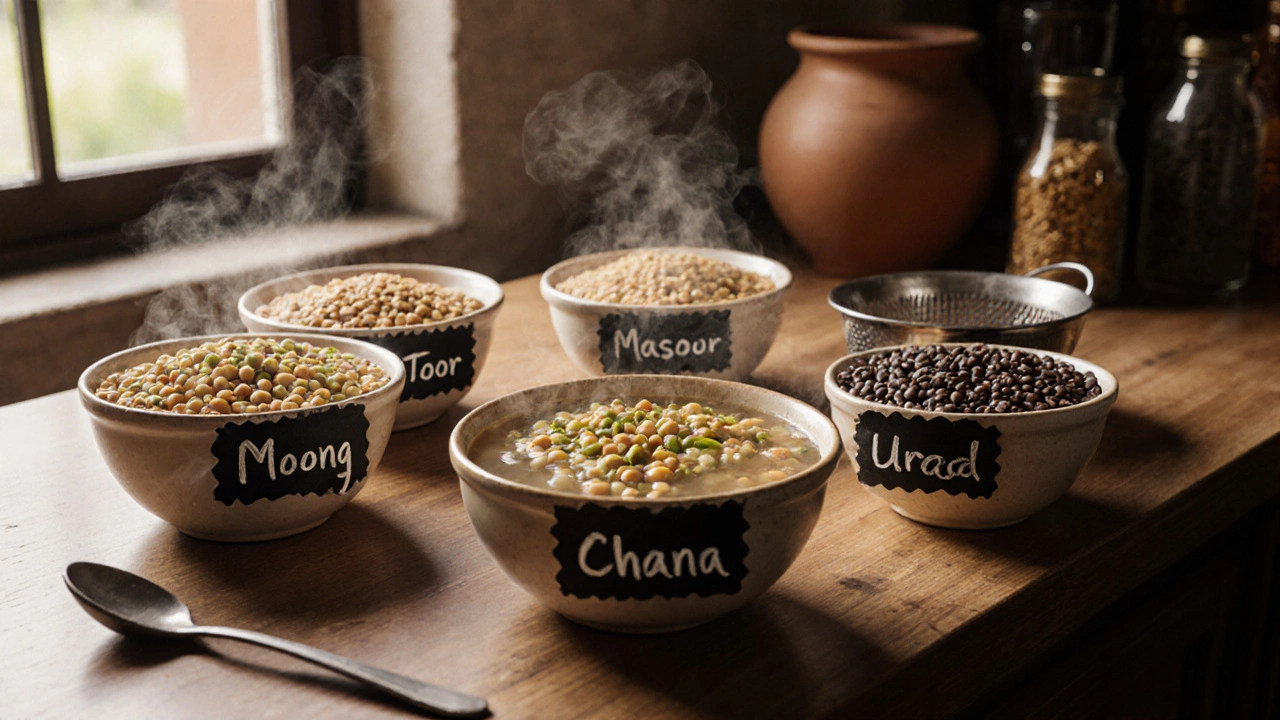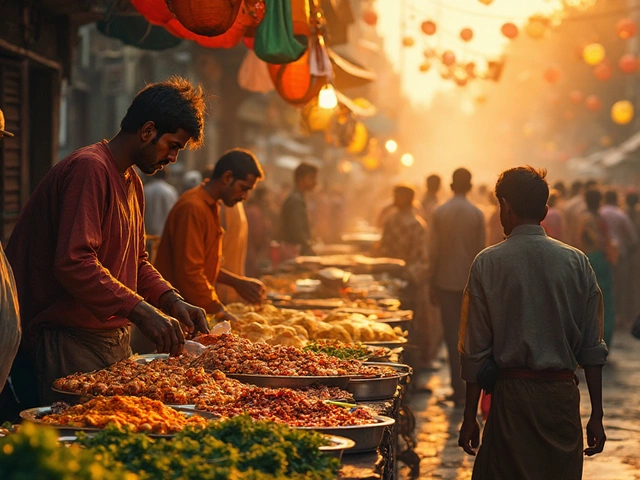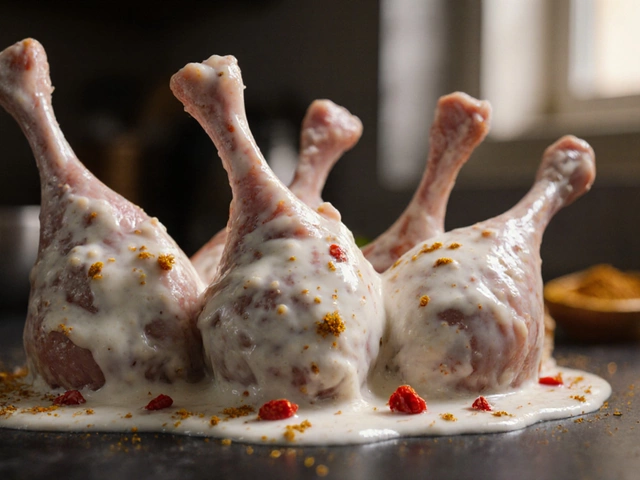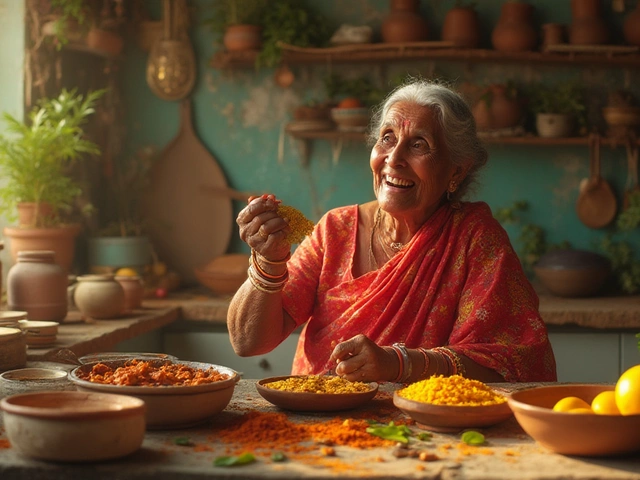Dal Soaking Time Calculator
Find Your Perfect Dal Soaking Time
Select your dal type to get the ideal soaking time range and cooking tips.
Select a dal type above to see optimal soaking time.
Tip: For faster cooking, try the hot water soak method - pour boiling water over dal and let sit for 15-20 minutes.
Soaking dal before cooking isn’t just tradition-it’s science. Skip it, and you’ll end up with hard, unevenly cooked lentils that take forever to soften. Do it right, and your dal turns creamy in under 20 minutes, digestible, and full of flavor. But how long should you really soak it? The answer isn’t one-size-fits-all. It depends on the type of dal you’re using, your stove, your altitude, and even your stomach.
Why Soak Dal at All?
Dal is made from dried lentils or split peas. When they dry out, their natural starches and proteins lock up tightly. Soaking breaks that lock. It softens the outer skin, rehydrates the inner flesh, and kickstarts the breakdown of phytic acid-a compound that blocks mineral absorption and can cause bloating.
Think of it like waking up a sleepy person. You don’t yell at them to get up-you gently nudge them. Soaking is that nudge. It reduces cooking time by up to 40%, saves gas or electricity, and makes your dal easier on your gut. If you’ve ever felt heavy or gassy after eating dal, improper soaking is likely why.
Soaking Times by Dal Type
Not all dals are the same. Some are tiny and soft. Others are dense and stubborn. Here’s what works in real kitchens-from Cape Town to Chennai.
- Moong dal (yellow split mung beans): 30 minutes to 1 hour. These are the fastest to cook. Even a quick rinse and 30-minute soak will do if you’re in a rush.
- Masoor dal (red lentils): 20 to 40 minutes. They break down quickly, so don’t over-soak. More than an hour and they turn mushy before you even start cooking.
- Toor dal (split pigeon peas): 2 to 4 hours. This is the most common dal in South Indian sambar. It’s dense and needs longer to soften. If you’re making sambar, soak it overnight for the creamiest texture.
- Chana dal (split chickpeas): 4 to 6 hours. These are tougher. They’re used in curries and snacks like dal fry. Soaking overnight is ideal. If you’re short on time, use hot water (not boiling) to speed it up.
- Urad dal (split black gram): 4 to 8 hours. This one’s tricky. It swells a lot and can turn slimy if soaked too long. 6 hours is the sweet spot. For idli or dosa batter, soak overnight.
- Whole black lentils (urad whole): 8 to 12 hours. These are the unsplit version. They need the longest soak. Treat them like beans-overnight is best.
Hot Water Soak: A Time-Saver
Running out of time? Pour boiling water over your dal and let it sit for 15 to 20 minutes. This works surprisingly well for moong, masoor, and even toor dal. The heat breaks down the outer layer faster. Just drain and rinse before cooking. You won’t get the same depth of flavor as a long cold soak, but you’ll save time without sacrificing texture.
This trick is used by street vendors in Mumbai who need to serve 50 portions in an hour. It’s not fancy, but it’s effective.
What Happens If You Skip Soaking?
You can cook dal without soaking. But you’ll pay for it.
- It takes 45 to 90 minutes to cook instead of 15 to 30.
- The dal cooks unevenly-some pieces are mushy, others are crunchy.
- You’ll need more water, which dilutes flavor.
- It’s harder to digest. Many people blame dal for gas, but it’s often the unsoaked lentils causing it.
A 2023 study from the Indian Institute of Food Processing Technology found that unsoaked toor dal retained 37% more phytic acid than soaked dal. That means less iron and zinc absorbed by your body. Soaking isn’t optional if you care about nutrition.

Soaking Tips That Make a Difference
Here’s what most recipes don’t tell you:
- Use filtered or clean water. Chlorinated tap water can slow down rehydration. If your water tastes strong, use bottled or boiled-and-cooled water.
- Don’t cover the bowl. Let the dal breathe. A lid traps moisture and can cause fermentation if soaked too long.
- Rinse twice. Wash the dal before soaking to remove dust and debris. Rinse again after soaking to wash away the released phytic acid.
- Soak in a cool place. In warm climates like Cape Town, don’t leave dal soaking on the counter for more than 6 hours. Use the fridge if you’re soaking overnight.
- Don’t soak for more than 12 hours. Beyond that, nutrients start to leach out and the texture turns slimy.
Soaking vs. Pressure Cooking: Which Wins?
Some people say pressure cookers make soaking unnecessary. That’s misleading.
A pressure cooker speeds up cooking, but it doesn’t fix the root problem: hard-to-digest compounds. Soaked dal still cooks faster in a pressure cooker-usually 3 whistles instead of 6. And the texture? Creamier, smoother, less gritty.
If you skip soaking and pressure cook, you’ll get edible dal. But not great dal. Think of it like boiling pasta without salt-technically done, but missing something.
What About Pre-Cooked or Instant Dal?
Pre-cooked or instant dal packets exist. They’re convenient, yes. But they’re often stripped of fiber, soaked in preservatives, and lack depth of flavor. They’re fine for emergencies, but they’re not real food.
Real dal-soaked, simmered, tempered with cumin and curry leaves-tastes different. It’s earthy, rich, and comforting. That’s what you’re after.
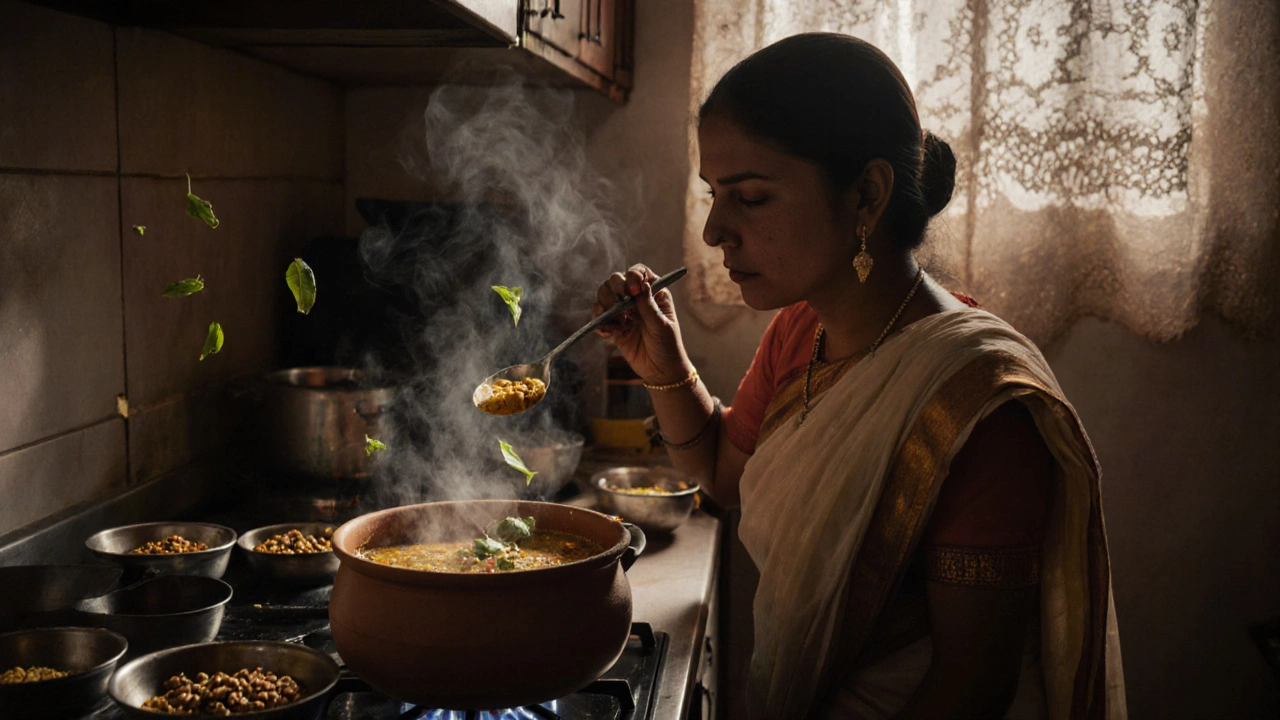
Quick Reference Chart
| Dal Type | Soak Time | Best For | Warning |
|---|---|---|---|
| Moong dal | 30 min - 1 hr | Khichdi, soups | Don’t soak over 2 hours |
| Masoor dal | 20 - 40 min | Red dal curry, dals | Turns mushy if soaked too long |
| Toor dal | 2 - 4 hrs | Sambar, tarka dal | Overnight is best for creaminess |
| Chana dal | 4 - 6 hrs | Dal fry, snacks | Use hot water if short on time |
| Urad dal | 4 - 8 hrs | Idli, dosa, dal makhani | Over 8 hours = slimy texture |
| Whole black lentils | 8 - 12 hrs | Whole lentil curries | Always soak overnight |
What to Do If You Forgot to Soak?
Life happens. You opened the bag, realized you forgot to soak, and dinner’s in an hour.
Here’s your rescue plan:
- Give the dal a good rinse.
- Place it in a pot with 3x the amount of water.
- Bring to a boil, then turn off the heat.
- Cover and let sit for 30 minutes.
- Drain, rinse again, and cook as usual.
This mimics the hot soak method. It won’t be perfect, but it’ll be better than cooking dry dal for an hour.
Can I soak dal overnight?
Yes, for most dals-especially toor, chana, and whole black lentils. Overnight soaking (8-12 hours) makes them cook faster and digest better. Just store them in the fridge if your kitchen is warm to prevent fermentation.
Should I soak dal in hot or cold water?
Cold water is best for long soaks (over 2 hours). It preserves nutrients and texture. For quick soaks, hot (not boiling) water works fine and cuts time in half. Avoid boiling water-it can start cooking the dal unevenly.
Do I need to soak dal for making dal fry?
Yes, especially if you’re using chana dal or toor dal. Unsoaked dal will stay grainy and won’t absorb the spices properly. Soaking helps the dal soften completely so it melts into the tempering instead of sitting as hard lumps.
Why does my dal still feel gritty after cooking?
You probably didn’t soak it long enough, or you used old dal. Lentils lose moisture over time. If your dal is more than a year old, it may never soften fully. Buy from stores with high turnover, and check the harvest date if possible.
Can I soak different dals together?
Only if they have similar soaking times. Mixing moong and toor dal? Bad idea. One will be mushy, the other still hard. Stick to one type per soak. If you’re making mixed dal, soak each type separately, then combine before cooking.
Final Tip: Taste Before You Serve
Even after soaking and cooking, always taste a spoonful. If it’s still crunchy, add a splash of hot water and cook 5 more minutes. Don’t rely on timers-rely on texture. Perfect dal should mash easily between your tongue and the roof of your mouth. No grit. No resistance. Just smooth, rich comfort.
Soaking dal isn’t a chore. It’s the first step in making food that loves you back.
- Poplular Tags
- soak dal
- dal soaking time
- how to cook dal
- dal preparation
- lentil soaking





